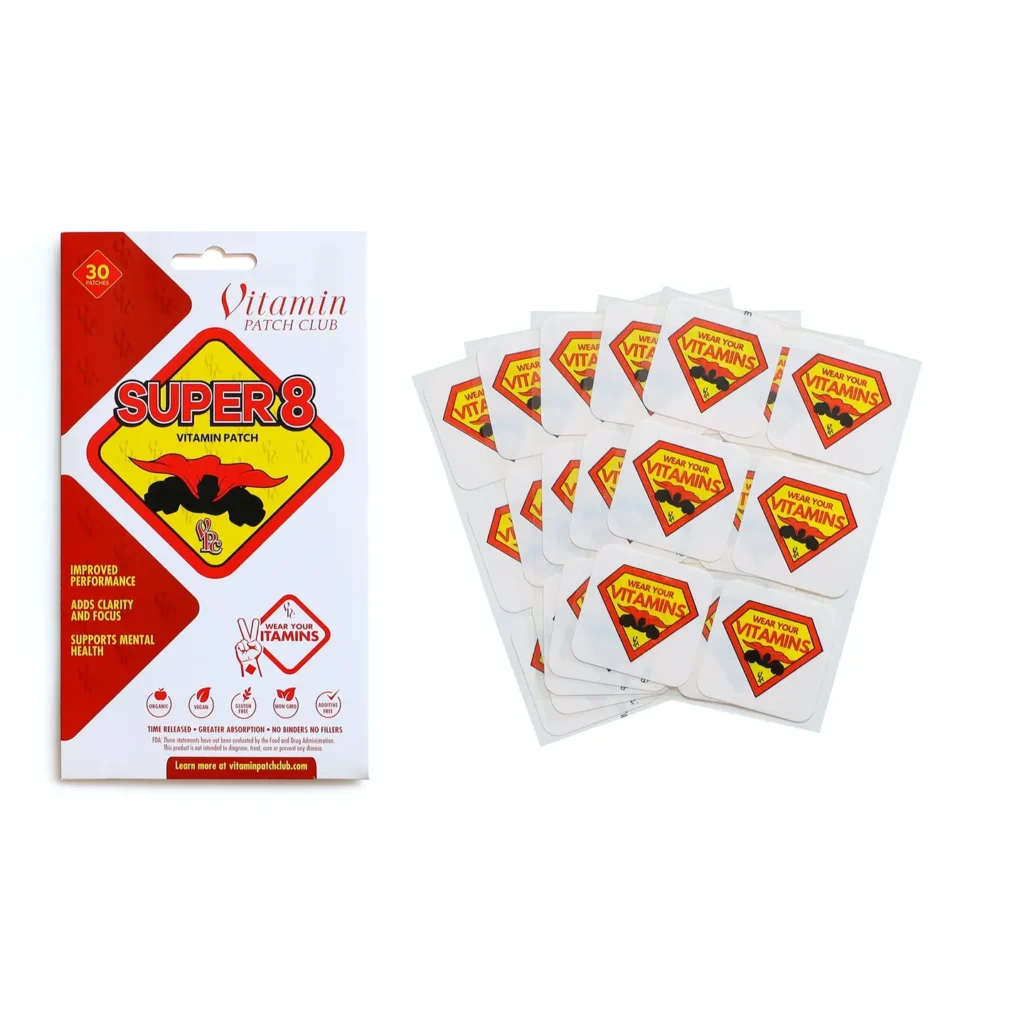White patches on the face can be a noticeable and often concerning sign of an underlying issue. While the cosmetic impact of these patches is immediate, their root causes are even more important to understand. Vitamin deficiency is one of the main reasons behind these unsightly marks, which can appear suddenly and disrupt your skin’s appearance. If you’ve noticed white patches forming on your face, it might be time to explore whether a vitamin deficiency could be the culprit. To unlock the Secret of Deficiency White Patches on Face, we will discuss the causes, symptoms, and treatments of vitamin deficiency white patches on the face, and offer practical advice for managing the condition.
Table of Contents

What Are Vitamin Deficiency White Patches on the Face?
Vitamin deficiency white patches are areas of hypopigmentation that appear on the skin, particularly on the face. Hypopigmentation occurs when the production of melanin, the pigment responsible for skin color, is reduced or halted. As a result, these patches appear lighter than the surrounding skin, sometimes making the patches very noticeable. Depending on the severity, these white patches may appear as small dots, larger blotches, or more irregular shapes.
The skin is a reflection of overall health, and any changes in the color or texture can be indicative of internal imbalances. For many people, these white patches on the face are one of the first noticeable signs of a vitamin deficiency. While there are several potential causes for white patches, this article will focus on those linked to deficiencies in essential vitamins.
Vitamin Deficiency and Skin Health: The Connection
Your skin relies on a variety of vitamins to stay healthy and function properly. When your body is deficient in one or more of these key nutrients, the skin can suffer, sometimes leading to visible issues such as white patches. Deficiencies in vitamins such as B12, D, E, and A can interfere with the production of melanin, causing these pigmentation changes.
Here’s a closer look at how vitamin deficiencies affect the skin and lead to white patches on the face.
1. Vitamin B12 Deficiency and White Patches
Vitamin B12 is essential for maintaining healthy skin, as it helps produce red blood cells, supports nerve function, and regulates the production of melanin. When you don’t have enough B12, your skin may begin to lose its natural color in certain areas, resulting in the formation of white patches.
Vitamin B12 deficiency is particularly common in people who follow a vegetarian or vegan diet, as this vitamin is primarily found in animal products such as meat, fish, eggs, and dairy. If you experience symptoms such as pale skin, fatigue, weakness, numbness or tingling in your hands and feet, and difficulty thinking clearly, you may be suffering from a vitamin B12 deficiency.
While white patches are often the most noticeable skin symptom of a B12 deficiency, other signs include changes in the skin’s texture, a general feeling of weakness, and irritability. Treating this deficiency involves replenishing B12 levels either through diet or supplementation. Incorporating B12-rich foods like eggs, cheese, milk, and fish can help. In cases of severe deficiency, vitamin B12 injections or high-dose supplements may be required.

2. Vitamin D Deficiency and White Patches
Vitamin D plays a vital role in the overall health of your skin, including the regulation of melanin production. Melanin is the pigment responsible for your skin’s color, and vitamin D helps control how much of it is produced. A deficiency in vitamin D can weaken your skin’s ability to repair itself and may contribute to the development of white patches, especially on areas that are more sun-exposed.
Vitamin D deficiency is extremely common, particularly in people who live in regions with limited sunlight or those who have low sun exposure due to lifestyle factors. Symptoms of vitamin D deficiency may include bone pain, muscle weakness, fatigue, and dry skin. If the deficiency is severe, it can contribute to conditions like rickets in children or osteomalacia in adults.
To improve vitamin D levels and potentially alleviate white patches, getting regular sun exposure (about 10-30 minutes a day, depending on skin type and location) is essential. Additionally, consuming foods rich in vitamin D, such as fatty fish (like salmon and mackerel), fortified dairy products, and egg yolks, can help raise your levels. Vitamin D supplements may be recommended by a healthcare professional if dietary sources and sunlight exposure are insufficient.
3. Vitamin E Deficiency and White Patches
Vitamin E is an antioxidant that protects the skin from oxidative stress and helps maintain the integrity and elasticity of the skin. A deficiency in vitamin E can lead to a variety of skin problems, including dryness, roughness, and the formation of white patches on the skin.
Vitamin E deficiency can also cause other symptoms like muscle weakness, vision problems, and a compromised immune system. Those at risk of developing vitamin E deficiency include individuals with certain health conditions that affect fat absorption, such as cystic fibrosis or Crohn’s disease.
To combat vitamin E deficiency, dietary sources of this essential nutrient should be included in your meals. These include nuts (especially almonds), seeds (like sunflower seeds), and green leafy vegetables such as spinach and kale. Vitamin E supplements may also help in cases of severe deficiency.
4. Vitamin A Deficiency and White Patches
Vitamin A is crucial for maintaining healthy skin and ensuring proper cell growth. It supports the production of new skin cells and helps the skin stay moist and supple. A deficiency in vitamin A can cause a number of skin issues, including the appearance of white patches on the face.
When vitamin A is lacking, it can lead to dry, rough, and thickened skin, a condition known as hyperkeratosis. Hyperkeratosis can result in white patches forming on the face and other parts of the body. Vitamin A deficiency can also cause night blindness, dry eyes, and an increased risk of infections.
Vitamin A is found in both animal products (such as liver, egg yolks, and dairy) and plant-based foods (such as carrots, sweet potatoes, and dark leafy greens). Ensuring adequate intake of vitamin A through food or supplements is essential for maintaining healthy skin and preventing white patches.

Other Causes of White Patches on the Face
While vitamin deficiencies are a common cause of white patches on the face, they are not the only reason for this condition. Other potential causes include:
- Vitiligo: A chronic skin condition that causes loss of pigmentation in certain areas of the skin, resulting in white patches.
- Tinea Versicolor: A fungal infection that affects the skin and can cause discolored patches, including white spots.
- Pityriasis Alba: A mild form of eczema that often causes white patches, especially in children.
- Sun Damage: Excessive sun exposure can lead to pigmentation issues, including white spots or patches.
How to Diagnose Vitamin Deficiency White Patches on the Face
If you notice white patches on your skin and suspect a vitamin deficiency, it’s important to seek a professional diagnosis. A healthcare provider can conduct various tests to determine the cause of the white patches and recommend appropriate treatments.
1. Medical History and Physical Exam
Your doctor will begin by asking about your medical history and conducting a thorough physical examination. They will look for other signs of vitamin deficiencies or underlying skin conditions.
2. Blood Tests
Blood tests are essential for diagnosing vitamin deficiencies. These tests will measure the levels of vitamins B12, D, E, and A, as well as other nutrients that may affect skin health. The results will help your doctor determine whether a deficiency is present and which vitamin needs to be supplemented.
3. Skin Biopsy
In some cases, if the doctor is unsure about the exact cause of the white patches, a skin biopsy may be performed. This procedure involves taking a small sample of skin for further examination under a microscope.
Treatment for Vitamin Deficiency White Patches
The treatment for white patches caused by vitamin deficiencies typically involves replenishing the deficient vitamins. Here are the most common approaches:
1. Dietary Changes
Ensuring you eat a well-balanced diet rich in essential vitamins can help prevent and treat vitamin deficiencies. Include foods that are high in vitamins B12, D, E, and A. These include dairy products, leafy greens, eggs, nuts, seeds, and fatty fish.
2. Vitamin Supplements
If dietary changes are insufficient, your doctor may recommend vitamin supplements. Depending on the deficiency, supplements may be available in various forms, including oral pills, injections, or topical treatments.
3. Topical Treatments
Topical creams and ointments that contain vitamins such as vitamin E or A can be applied directly to the affected areas. These treatments help moisturize the skin, reduce inflammation, and promote healing.
Preventing Vitamin Deficiencies and White Patches
To avoid vitamin deficiencies and the associated white patches on the face, it’s important to maintain a balanced diet, get regular sun exposure, and incorporate vitamin-rich foods into your meals. Regular check-ups with your healthcare provider can help identify any deficiencies early on, ensuring that they are addressed before they cause visible skin issues.
Conclusion
White patches on the face caused by vitamin deficiencies can be alarming, but they are often treatable with proper nutrition and supplementation. If you suspect a deficiency is responsible for your white patches, consult with a healthcare provider for a thorough diagnosis and treatment plan. By incorporating vitamin-rich foods into your diet and following your doctor’s recommendations, you can help restore your skin’s health and prevent further pigmentation issues. With the right approach, those unsightly patches will soon be a thing of the past.

FAQs About Vitamin Deficiency and White Patches on the Face
- Can vitamin B12 deficiency cause white patches on the face?
Yes, a deficiency in vitamin B12 can lead to white patches due to its role in melanin production. - What is the best vitamin for skin pigmentation?
Vitamins B12, D, E, and A are all important for maintaining healthy skin pigmentation. - How long does it take to recover from a vitamin deficiency?
Recovery time depends on the severity of the deficiency and the type of treatment. For some, improvement may be seen in a few weeks, while others may need several months. - Can sun exposure help with vitamin D deficiency?
Yes, sunlight is a natural source of vitamin D, and getting regular exposure can help boost your levels. - What foods are rich in vitamin E?
Nuts, seeds, spinach, and broccoli are all excellent sources of vitamin E.

